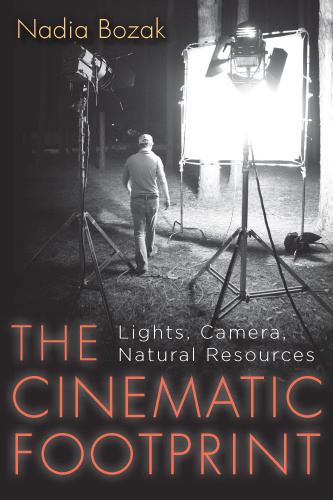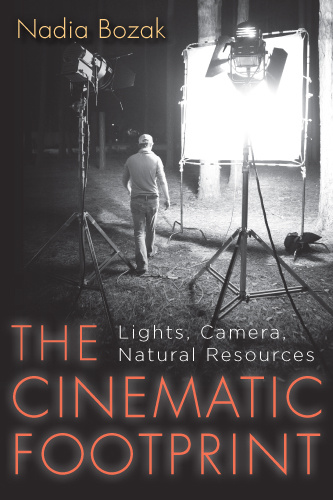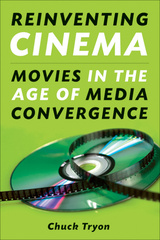Film is often used to represent the natural landscape and, increasingly, to communicate environmentalist messages. Yet behind even today’s “green” movies are ecologically unsustainable production, distribution, and consumption processes. Noting how seemingly immaterial moving images are supported by highly durable resource-dependent infrastructures, The Cinematic Footprint traces the history of how the “hydrocarbon imagination” has been central to the development of film as a medium.
Nadia Bozak’s innovative fusion of film studies and environmental studies makes provocative connections between the disappearance of material resources and the emergence of digital media—with examples ranging from early cinema to Dziga Vertov’s prescient eye, from Chris Marker’s analog experiments to the digital work of Agnès Varda, James Benning, and Zacharias Kunuk. Combining an analysis of cinema technology with a sensitive consideration of film aesthetics, The Cinematic Footprint offers a new perspective on moving images and the natural resources that sustain them.
Revelatory. Bozak is passionate and occasionally poetic.
Bozak looks at the many issues surrounding the relationship between film and the natural environment. The book is at the intersection of many disciplines and will thus likely prove thought provoking for a wide range of readers. It is an ideal volume for serious students of film and environmental studies. Highly recommended.
Highly original and beautifully written, Bozak's groundbreaking work adds an essential new dimension to the act of critically viewing film. I have long been awaiting a book that brings environmental matters into the heart of film and media studies!
Very few recent books on cinema genuinely deserve to be called 'groundbreaking.' This, by all means, is one of them.
Bozak's arguements are illuminating and thought-provoking. The Cinematic Footprint is a must read for anyone interested in the developing canon of ecocinema studies.
Revelatory. Bozak is passionate and occasionally poetic.
Bozak looks at the many issues surrounding the relationship between film and the natural environment. The book is at the intersection of many disciplines and will thus likely prove thought provoking for a wide range of readers. It is an ideal volume for serious students of film and environmental studies. Highly recommended.
Highly original and beautifully written, Bozak's groundbreaking work adds an essential new dimension to the act of critically viewing film. I have long been awaiting a book that brings environmental matters into the heart of film and media studies!
Very few recent books on cinema genuinely deserve to be called 'groundbreaking.' This, by all means, is one of them.
Bozak's arguements are illuminating and thought-provoking. The Cinematic Footprint is a must read for anyone interested in the developing canon of ecocinema studies.
NADIA BOZAK holds a PhD in comparative literature from the University of Toronto. She is also a published novelist.
Introduction
1. Energy
2. Resource
3. Extraction
4. Excess
5. Waste
Conclusion
Notes
Bibliography
Index








